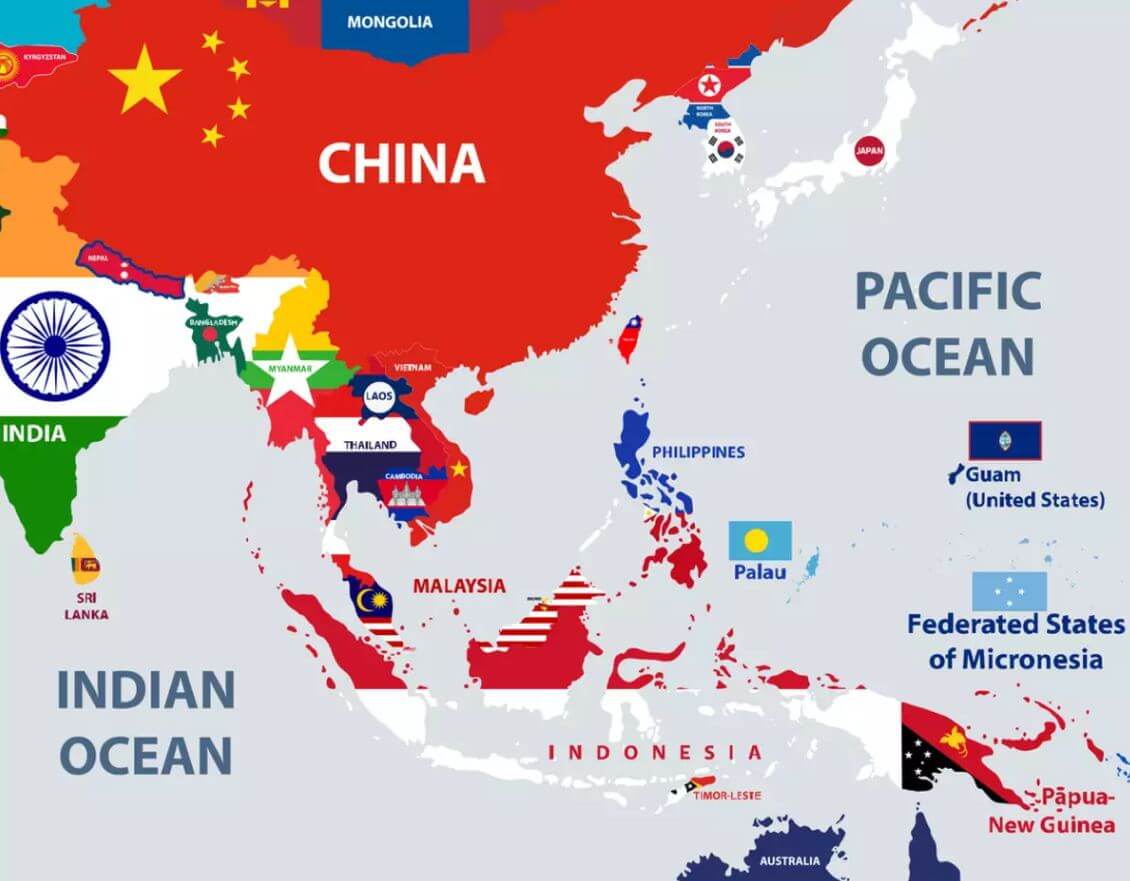Swadesh Roy
The grouping of four democracies – Australia, India, Japan and the US – known as quadrilateral security dialogue or Quad has been formed to contain China’s rise; and Deputy Secretary of State Stephen E. Biegun’s visit to Bangladesh was very much related to strengthening Quad through the support of other Asian countries. Biegun, the second-highest ranking U.S. State Department official, came to Bangladesh after visiting India.
Before Biegun’s visit to Dhaka on October 14-16, US Secretary of State, Mike Pompeo arrived in Japan on Oct 6. Japan is one of the strengths of the Quad. Pompeo spoke about “a free and open Indo-Pacific,” “to collaborate” and to look forward “to more concrete steps with the Quad going forward.” Pompeo’s visit to Japan made it clear that the United States and Japan intend to include more countries from the Indian Ocean and the Pacific Ocean in this four-nation Indo-Pacific alliance in the future.
This became clear when Japan’s new Prime Minister Suga Yoshihide visited Vietnam and Indonesia from Oct 18-21. It was Japan’s new prime minister’s first overseas trip with a foreign head of the government after assuming office last month, taking over from long-reigning Shinzo Abe, who resigned, citing health issues. In Vietnam, Yoshihide pushed for an Indo-Pacific vision for peace and stability in the region and the world.
Expansion of Quad?
It is clear that the main objective of US foreign policy at the moment is to connect with as many Asian countries directly or indirectly as possible with regard to Quad. They want to build a new ‘Asian NATO’ called the Quad in Asia – in the style of the post-World War II NATO formed with the European countries against the then Soviet Union – which will basically work against an assertive China. Their goal is not only to keep China away from the Indo-Pacific but also to prevent China from building a hegemony in the South China Sea. And to that end, they’ve been working to strengthen Indian, Japanese, and Pacific Ocean rim navies since the Obama’s administration.
At a time when the US is keen to build an ‘Asian NATO’, which is opposed, to China, Biegun visited Bangladesh and India. And it is believed that India could influence other South Asian nations like Sri Lanka, Maldives – the two Indian Ocean countries which Pompeo visited during his October 25 to 29 tour – if the forum is expanded. At the moment, however, Biegun has stated during his New Delhi visit that Quad is an “undefined entity,” and there are no plans to expand it from the current format.
Rohingya issue
Bangladesh has a distinct priority among South Asian countries. For this reason, the visit to Bangladesh was important for Biegun after India. Whatever the position of India and the US earlier on the Rohingya issue two years ago, now they see it as a major weapon against China. This is because China has invested in Myanmar’s Kyaukpyu Deep Sea Port, on the coast of Bay of Bengal and not far away from a submarine base India is developing on its east coast, close to Vishakhapatnam.
Relations between India and China have worsened over the past few months, and the two Asian giants are having months-long faceoff along the disputed Himalayan border. Pompeo during his visit to India extended strong support for India’s efforts to defend its sovereignty – a reference to the military standoff in Ladakh – and said that the US “will stand with India as they confront threats to their sovereignty and liberty.” Both India and the US discussed the Rohingya issue. Indian Foreign secretary Harsh Shringla and Army Chief Gen. M.M. Naravane during their visit to Myanmar had also discussed the “early repatriation” of Rohingya refugees.
During the press briefing in Bangladesh, Biegun too flagged it and targeted China. “China has unfortunately done very little to help resolve the Rohingya issue,” he said. He further added that the US will work closely with Bangladesh and other countries in the region for a lasting solution to the crisis. “…We hope that we see the same level of generosity and the same level of clarity in messages to the Government of Myanmar from other partners or other nations in the Indo-Pacific, particularly China,” he said.
Hasina made her position clear
Bangladesh Prime Minister Sheikh Hasina is one the most experienced heads of government in the world. She understood these politics beforehand. So, she made her position clear as the chief guest of the 2019 Indian Ocean Conference. She said that 35 percent of the world’s population lives in those Asian countries that are connected to the Indian Ocean. Her position is that these people can and should live in peace. For this reason, when Biegun visited Bangladesh, Sheikh Hasina’s position was clear to him. It is no surprise that the US is showing its interest in Bangladesh due to Bangladesh’s sustained growth, political stability, and strategic geopolitical location.
For the first time, Biegun made it clear through his visit that Bangladesh has strategic importance. This is for the first time an attempt has been made by the US to engage Dhaka directly since China took several proactive measures to help Bangladesh deal with COVID-19 and mega infrastructure projects. The visit demonstrated that the US wants to draw Bangladesh into its Indo-Pacific matrix.
“The US sees Bangladesh as a key partner in the Indo-Pacific region … we are committed to growing our partnership in this regard to advance a free and open Indo-Pacific. Bangladesh will be the centerpiece of our work in the region,” Biegun said.
However, it is also true that although Bangladesh is in favor of peace in the Indo-Pacific, its situation is a bit like that of South Korea. According to analysts, the economic ties and financial aid given by China, it is not possible for South Korea to actively be part of the Quad. In the same way, it is difficult to deny China’s growing trade and economic relations with Bangladesh. As Biegun has promised to persuade many US companies to invest in Bangladesh, and if the US also allows duty-free access of their garment products to their market, then Bangladesh’s economic dependence on China might reduce and a new strategic alignment might emerge. South Asia Monitor







